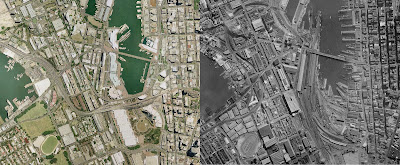Arise the E-Readers
 Today all the internet is abuzz and agog with the newly released e-reader from Amazon called the Kindle. This is a very interesting new addition to the gadget world. E-books have tried and failed before, there was the e-book gold rush that occurred at the same time as the internet bubble while they both imploded together the e-book failure was largely due to the small screens of PDA or clunkyness of laptops that made reading books off them not a comfortable experience. The arrival of commercial e-ink has been a long time coming. Some have likened the release of the Kindle to the iPod. Both terms of of game changing and scope.
Today all the internet is abuzz and agog with the newly released e-reader from Amazon called the Kindle. This is a very interesting new addition to the gadget world. E-books have tried and failed before, there was the e-book gold rush that occurred at the same time as the internet bubble while they both imploded together the e-book failure was largely due to the small screens of PDA or clunkyness of laptops that made reading books off them not a comfortable experience. The arrival of commercial e-ink has been a long time coming. Some have likened the release of the Kindle to the iPod. Both terms of of game changing and scope.
I for one would like suggest that the Emperor has no clothes, and while it is a significant release I don’t believe the Kindle will have the longevity of the iPod. That is a heady claim, however, unlike most people, I have been the proud owner of a Sony Reader for 6 months, Sony’s first western release of an e-ink product. It is not the best product in the world. The page changes take too long (~1-2 seconds), the contrast needs some work and the battery time while rated at 7000 pages turns really some in about 400 for actual usage. However it has changed the way I read. It is the right size and I think looks as good as it needs to. True it doesn’t have the keypad of the kindle (but is found in the Japanese version the LIBRIé). I think that the kindle is trying to replace a PDA and not a book. Sony needs to add a WiFi to the reader and it would be truly excellent. I am still however happy with the money I spent and find that the need to go to a computer every few weeks to upload some new books hardly a chore.
 2007 has been a very interesting year thus far with nearly every music producer beginning to understand that DRM is not working. They are finally pursuing a business model where DRM enforcement is been dropped left, right and centre. So it is a big surprise to see how restrictive the initial release of the Kindle is. It almost as if they haven’t read Steve Jobs letter, the horror. Certain file can’t be downloaded direct to the Kindle and have to be converted to some propriety protected format, via the Amazon servers. However it is already a lost battle with thousands of books already available, and unprotected on the internet.
2007 has been a very interesting year thus far with nearly every music producer beginning to understand that DRM is not working. They are finally pursuing a business model where DRM enforcement is been dropped left, right and centre. So it is a big surprise to see how restrictive the initial release of the Kindle is. It almost as if they haven’t read Steve Jobs letter, the horror. Certain file can’t be downloaded direct to the Kindle and have to be converted to some propriety protected format, via the Amazon servers. However it is already a lost battle with thousands of books already available, and unprotected on the internet.
I’m sure that there will be other readers that come along that will be competive with the Kindle, maybe even one from Apple? Who knows until then it will very interesting to see the take up on the Kindle now that it has been released.
Also just this week there was an announcement of a book ripper, from a crowd called ATIZ, which would allow people to “rip” books they already own and create digital copies that can be read on any format they choose using little more than digital cameras. I’m not sure if it is ready for prime time but it is a start.
I feel a bit mixed about books finally moving digital. My personal opinion is that downloading music from the internet is OK, as it should be (and it should have always been) a promotion tool for artists to attract paying fans to live gigs, an experience that just can not be downloaded. It is similar but a little less true for movies, now that people have huge entertainment centres there is a fall off when people watch a movie at home instead of the cinema so that explains the next wave of 3D movies that Jim Cameron and Robert Zemeckis are current working on and which should keep bums on seats,and paying, for another 10 years.
I don’t however see the analogue for books. The e-reader experience is virtually identical to the book experience (you will get purists that will say the e-readers will never be the same as having a book in there hand, point them in the direction of vinyl lovers and see if they can make babies). There is little that an author can capitalise on once a book has been ripped and distributed without there permission, and more importantly without income. Sure they can hope it gets turned into a movie but what about the books that are great books unfilmable? Will we see the continued rise of product placement in successful stories?



